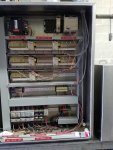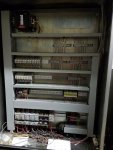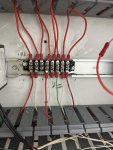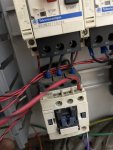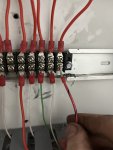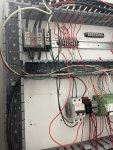MEP001
Well-known member
No, you need to connect those together on the outputs of the second stack at the rotary switch and run one wire straight to the contactor.So would I need relays for the high pressure functions since it requires a motor?
The only thing in that picture is a common hookup block. Each lead from the tire cleaner, presoak, and foam brush needs to connect straight from the rotary switch output to the solenoids for that bay. All the wires are color-coded, just remove the relays and directly couple the leads. Do you have a timer in the bay? The coin pulse wire doesn't need to come back into the room.This is what I have for the tire cleaner, ps and fb since I’m using Flowjet what do I need to setup the hot, coin pulse wire, motor start and the timed hot wire?


